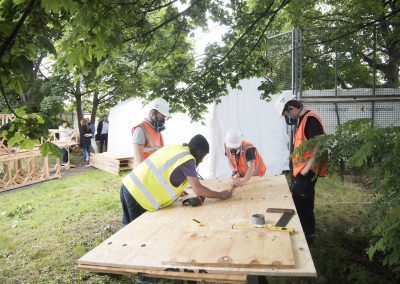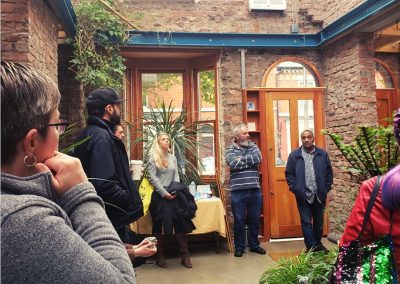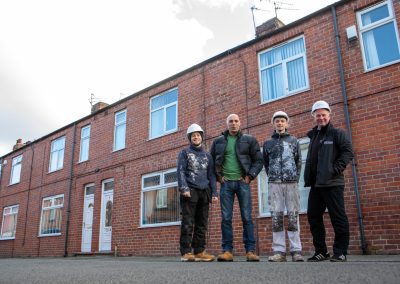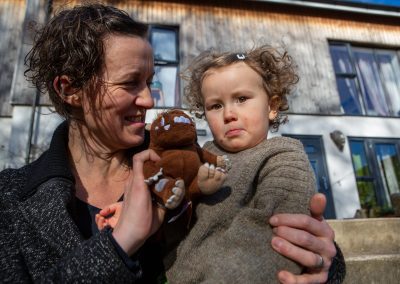Our chief executive, Tom Chance, reviews recent academic research into Power to Change’s Homes in Community Hands programme – what it is telling us, and what we can tell about the research.
I can only think of three programmes in community-led development in recent years that have given research a central role – the Big Local programme run by Local Trust, the Nationwide Foundation’s Decent Affordable Homes programme, and Power to Change’s Homes in Community Hands.
All three eschewed the familiar approach of simply doling out grants to exciting projects led by uniquely talented individuals and then documenting their successes with naively optimistic case studies.
All three have asked searching and fundamental questions about how community-led development can move from a philanthropy-dependent niche to a scale where it can have significant national impact.
Power to Change commissioned and published research into grant frameworks and enabling structures to shape the Homes in Community Hands Programme. It co-funded research to build our understanding of the pipeline, and to help the sector advocate for further investment from government and other funders. It co-funded the development of sector infrastructure at the national and regional levels. Oh, and it gave over £4m of grants to community projects.
Alongside this, it commissioned the Centre for Regional, Economic and Social Research (CRESR) at Sheffield Hallam University to thoroughly evaluate the programme.
The final report and briefing notes should be essential reading for anyone involved in community-led development.
I’ll pick out three themes that I think are particularly important.
The first is that, although it was framed as a ‘housing’ programme, the researchers found that over a third of the development budget for projects in the programme was allocated to non-residential assets.
A total of 44 funded organisations were also investing in high streets, green spaces, agricultural provision, renewable energy infrastructure, commercial space, community centres and other much-needed amenities. And so, whilst the potential housing impacts from these projects could be significant – for instance, they are likely to build more affordable homes on a given site than comparator affordable housing schemes – this will not be the limit of their contribution.
Project impacts stretched across several domains – addressing housing need, improving the environmental sustainability of housing, enhancing community cohesion and integration, creating neighbourhood improvements, benefiting volunteers through participation, and increasing local skills and employment.
Too often we think of community-led development in silos. A prime example is the Community Ownership Fund, for which housing is not an eligible activity. But housing-led projects very often enable community groups to develop other assets as part of the project; and high street projects such as Calder Valley CLT’s enterprise centre, South Bank CLT’s community grocery store and Homebaked CLT’s bakery work best by including space for housing. The evaluators urge funders to see that developing housing and other community spaces/facilities is often inextricably linked, and that funding one without the other may affect viability and the breath of social outcomes achieved.
Housebuilding is worth £47bn per year, representing 40% of all construction activity in the UK. So including it in our community-led development thinking represents a significant opportunity for communities to exercise agency and build local wealth.
The second theme is about the investment in enabling infrastructure.
Power to Change took the decision – on the basis of their research – to fund five enabling hubs, one in each target region, alongside providing project grants to local groups. The evaluation found this paid dividends.
The combination of enabler hub and project funding helped ecosystems of support to emerge in each city region. These included supportive local policy and politics, new partnerships and avenues for funding and finance, and diversifying support models and tools.
One result of this was that more projects formed than one might otherwise expect. The researchers estimate that the city regions had 160 more homes in their pipeline at year 3 of the evaluation than they otherwise would have expected.
So building this ecosystem of support is as important as developing funding directly to community groups.
Given these impressive successes, the third theme is therefore rather depressing.
Homes in Community Hands was terminated after three years, one year early. Related programmes like the Community Housing Fund ran for even shorter periods, or – like the Community Ownership Fund – silo housing as an ineligible activity.
Housing development of any kind – community-led or developer-led – typically takes 5 to 6 years from start to finish. Establishing an effective and financially sustainable enabler service will take a similar period of sustained investment. So stop-start and siloed funding is not only unhelpful, it risks leading communities up the garden path only to bang the door shut in their face.
Innovative projects have struggled to deliver, others have been mothballed or abandoned. Enabler hubs have started up and begun to bed in, but are now in financially precarious positions.
Here I’d again look to the Big Local programme. It is long-term – 10-15 years; resident-led and non-prescriptive, rather than applying silos like ‘housing’ or ‘high streets’; and accompanied by flexible and responsive support grounded in a continuous programme of research.
There’s much to celebrate, and much to learn from, in the evaluation reports. And it is welcome that Power to Change have committed to tracking projects funded by the Homes in Community Hands programme over the coming years.
But perhaps the most important lesson is community-led development requires long-term, flexible, community-led investment matched with a thorough research programme. It’s a lesson we will be feeding into the forthcoming consultation for a Community Wealth Fund, and our other advocacy work.








